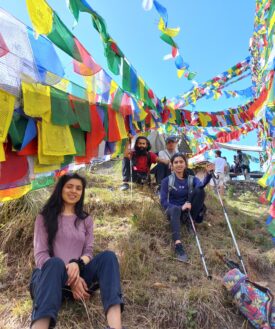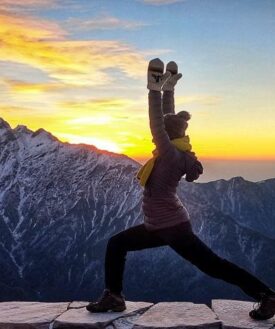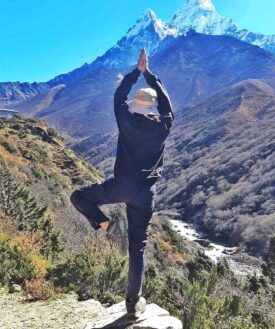A Quick Review; Altitude Sickness
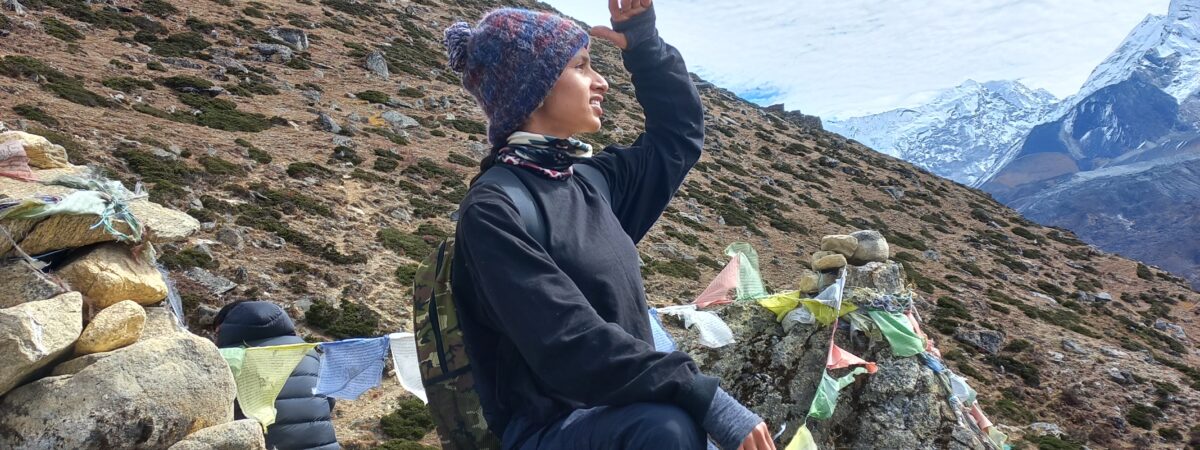
What gets triggered in your mind, hearing the word altitude sickness? We may visualize mountains, cold, and the Himalayas. Sometimes with a victim of shortness of breath or unconsciousness. Keep your curiosity alive and read the blog to satiate your curiosity.
What is altitude?
Altitude simply means elevation in geographic terminology. It is a vertical elevation or height measurement of geographic structures in reference to sea level. The sea level is considered zero meters or feet. The elevation is measured considering sea level as a base. If we move upward and away from the sea level, altitude increases.
What is high altitude?
High altitude is the elevation in which there are few oxygen molecules, the air is colder. You will need to take more breaths to provide the same amount of oxygen you used to have while at a lower altitude.
According to the Cleveland Clinic, heights above sea level are categorized as follows:
- High altitude: 2,438 meters (8,000 feet) to 3,658 meters (12,000 feet)
- Very high altitude: 3,658 meters (12,000 feet) to 5,486 meters (18,000 feet)
- Extreme altitude: more than 5,486 meters (above 18,000 feet)
Let’s see the context below;
New York City is situated at 10 meters above sea level, and Dubai City is located at 16 meters above sea level. Kathmandu City is at 1400 meters whereas Everest Base Camp is located at 5,364 meters from the sea level. The top of Mount Everest is 8,848 meters above sea level which is known as the top of the world.
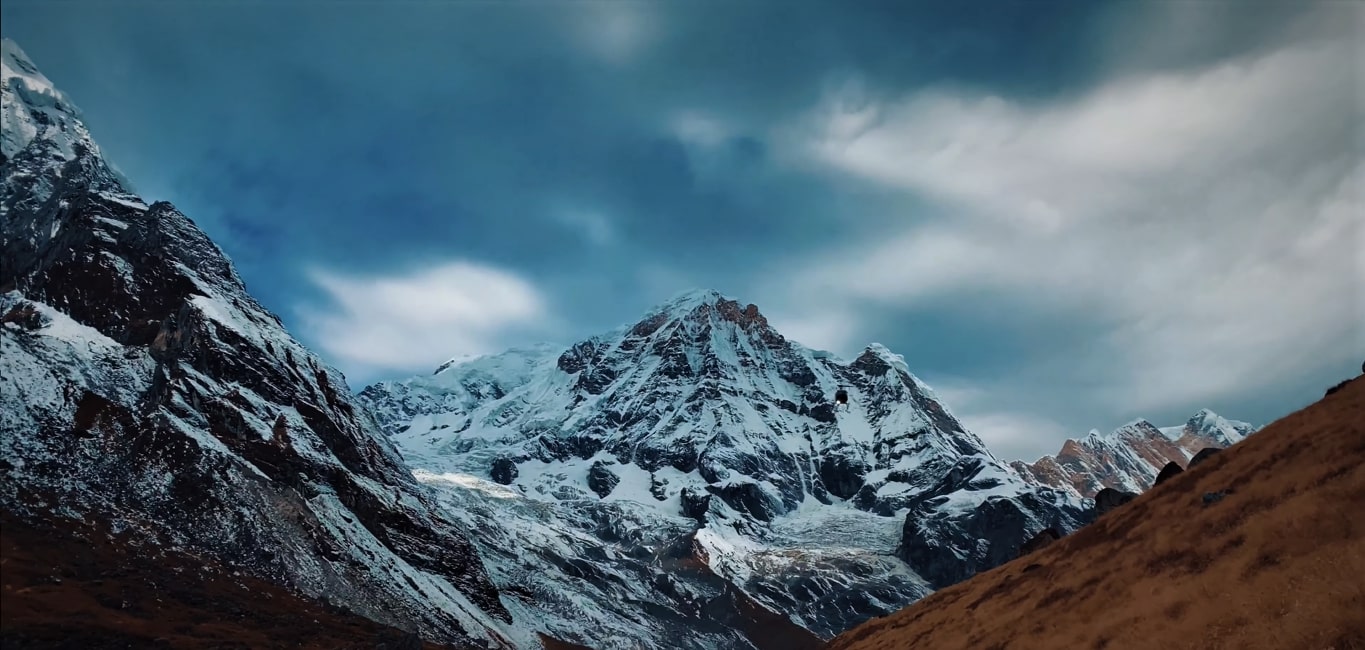
What is altitude sickness?
As the altitude increases air pressure decreases or high altitude means low air pressure. Low air pressure means fewer gas molecules including nitrogen, oxygen, and carbon dioxide in the air. Among all gases, oxygen is vital for the survival of human beings and all other animals on the planet. As the altitude rises the air becomes less dense which is referred to as thin air in mountaineer’s term
Altitude sickness is also known as mountain sickness. Mountain sickness is commonly called “Lekh Lagnu” in the Nepali language. It is a condition characterized by particular symptoms if you trek or climb higher elevations. The signs of altitude sickness may appear usually after reaching 2,400 meters (8,000 feet) or above sea level. One may develop altitude sickness due to a rapid change in air pressure and low air oxygen levels. The Himalayan atmosphere can be completely different compared to the place you come from, thus you may develop altitude sickness.
At altitudes above 8,000 meters (26,000 feet), the human body can’t survive at all because of minimal to no oxygen levels. Mountaineers call height above that a ‘death zone’.
Altitude sickness symptoms may vary from mild to severe. Mild symptoms like Lightheadedness, headache, fatigue, or feeling sick. Acute symptoms like nausea, vomiting, throbbing headache, chest tightness, confusion, and dizziness. Symptoms could start after as soon as 1 to 6 hours to at any point 1- 5 days of arrival at altitudes.
Simple human physiology to understand altitude sickness:
As elevation increases oxygen in the air starts depleting. Trekking or hiking is physically demanding. Depleted oxygen levels in the air cause difficulty in fulfilling the body’s oxygen demand. Less oxygen in the body cells signals the brain to increase the rate and depth of respiration. As a result, we start to breathe deeper and more frequently.
Do you know that oxygen is carried all over the body by red blood cells? Yes, the body also signals the bone marrow to release more red blood cells to meet the oxygen demand. Proper acclimatization is advised to adjust our body to the decreased oxygen level in the air. You will have then enough red blood cells to carry enough oxygen molecules in body cells helping you to complete trekking in the Himalayas.
Have you noticed that people from the Himalayas have flushed cheeks? It is because of an increased amount of Red blood cells in their body to adapt to low oxygen levels in the air.
Then why do we have altitude sickness?
Altitude sickness is difficult to predict, anyone can have it.
Lack of proper acclimatization deprives your body of adaptation with elevation. Our body requires some time to sensitize with decreased oxygen in the air.
As elevation increases our body loses extra water and electrolytes. Dehydration causes slower movement of blood cells to and from the brain. It causes delays in passing signals to the brain and waste materials (carbon dioxide) are also not flushed out of the body on time.
Your present health condition, and past medical history, may influence your health during the trek.
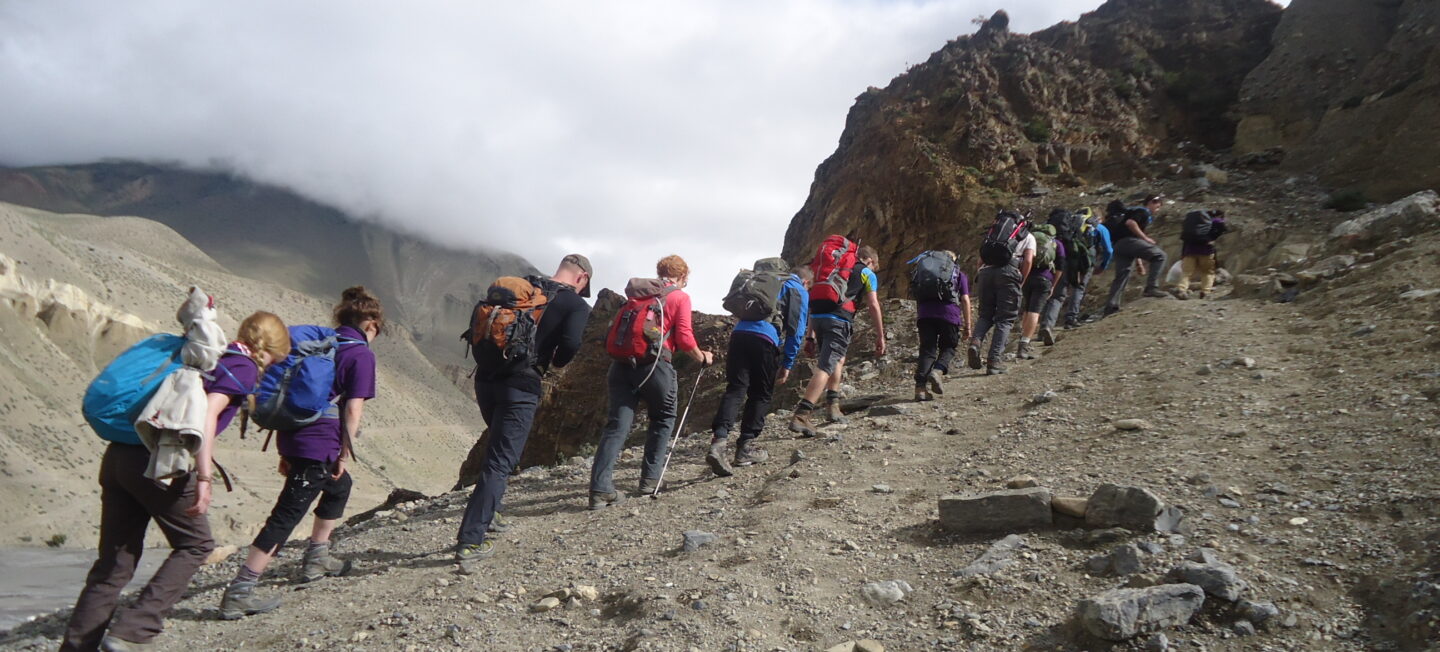
Risk factors of Altitude sickness
- Traveling to high altitudes too quickly
- Always living in low altitude or past history of altitude sickness
- Pre-existing medical conditions such as; asthma, hypertension, diabetes, sleep apnea, anemia, etc
- Strenuous physical activity during the trek
- Emotional and psychological stress during the trek
- Too young age below 18 years or too old age above 65 years
- Consumption of heavy meals during the trek
- Sleeping at high altitudes also increases the chance of developing symptoms
- Dehydration
- Lack of proper resting periods
- Consumption of Alcohol during the trek. Alcohol causes diuresis (increased urine frequency) and hypothermia (decreased body temperature), which increases the risk of altitude sickness.
- Exposure to the cold of the Himalayas
How to prevent Altitude sickness?
4 key points to prevent Altitude Sickness in Mountains;
- Climb high, sleep low rule
- Appropriate acclimatization rule
- Rehydration
- Don’t fly directly to the base camp or high-altitude
The fundamental rule for trekkers is ‘climb high, sleep low’. Ascend to the height during the daytime and descend to sleep during the night. Another rule is appropriate Acclimatization before reaching a new height, the slower the better.
Rehydration is found to prevent you from falling sick of altitude sickness. A well-hydrated body goes well with you in the mountains.
Plan your travel and do proper research before packing your backpack for the trek. Remember PREPARATION OF TREK SHOULD BEGIN MONTHS AHEAD OF YOUR TREK. YOUR HEALTHY BODY WILL SUPPORT YOU WHEREVER YOU GO IN THE WORLD.
YOU CAN BEGIN REGULAR JOGGING OR WALKING TO YOUR WORK A MONTH BEFORE YOUR ACTUAL HIMALAYAN TREK.
Don’t hurry to finish your trekking soon. And try to manage your time to avoid direct flying to the Everest Region. If you got a few days extra try a 1-day hike near Kathmandu to prepare your body for a long trek.
Suppose you plan to do a heli tour of Everest with a base camp landing. If it’s possible for you, it’s a good idea to do a few hikes around Kathmandu Valley. You can do a day hike to Jamacho gumba (2,100 meters) or Shivapuri Peak (2,732 meters) of 4-6 hours duration. A day hike will act as your preparatory work for the trek.
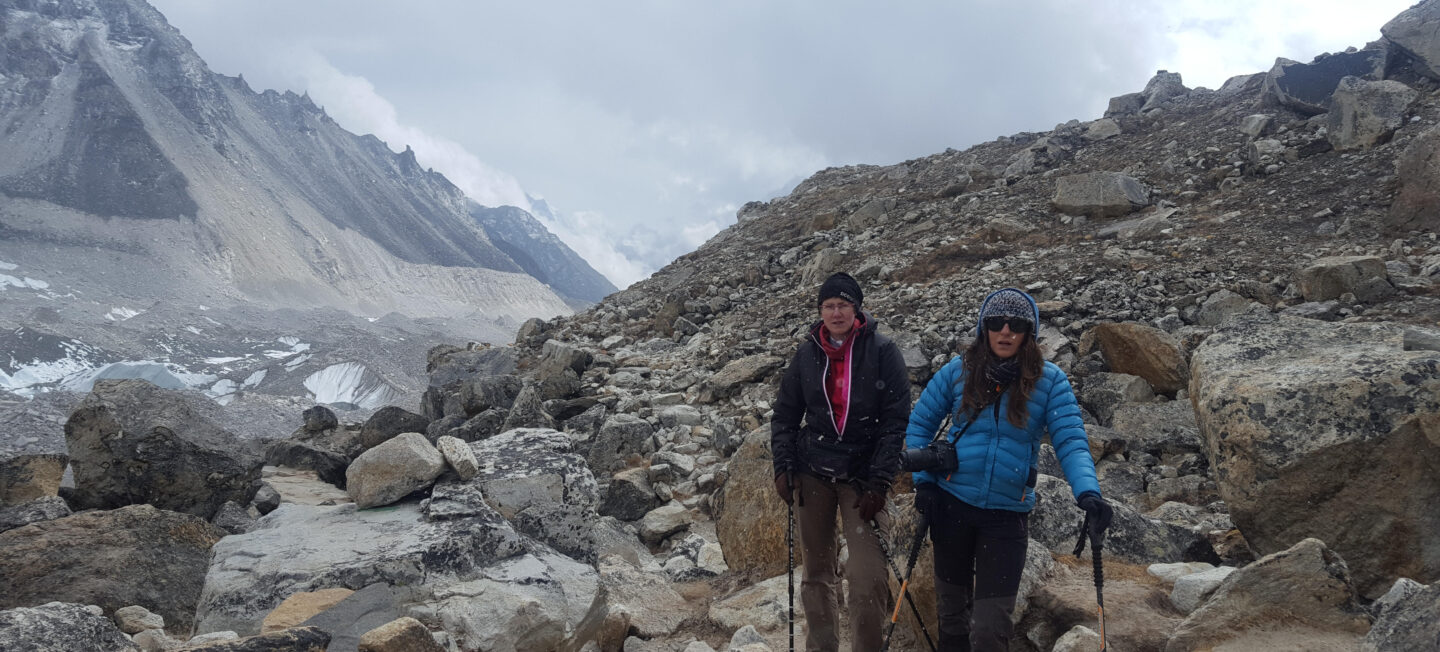
How to prevent Altitude Sickness during trek
- Make sure to know about altitude sickness symptoms before traveling so that you can identify them and seek help.
- Acclimatization is very important as you ascent
- Wear warm clothes; caps, gloves, mufflers, and jackets
- Drink enough water; remember carbonated drinks are not water
- Listen to your body all the time, if the body is cueing fatigue better rest.
- If you have pre-existing medical conditions make a visit to your doctor before planning for trek.
- If you have planned a trek to the Himalayas make a habit of walking even if it’s a few miles a day to warm up your leg muscles.
- Smile more and feel cheerful with every step you take to ascend
- Share your difficulties with the trek guide don’t lie or try to hide the symptoms as that could lead to a life-threatening condition
- Talk and laugh with your fellow trekkers
- Eat your meal properly but it shouldn’t be too heavy to digest
- It’s better to climb up in the daytime and come down to sleep at night.
- Gentle stretching or yoga can help you as pranayama helps to deepen your breaths and speed up your acclimatization.
- Walk stress-free
- Listen to your body, don’t overdo anything.
- Don’t carry your valuables to the mountain as your mind may indulge in the fear of losing them. Taking any kind of stress with you is carrying a risk of altitude sickness with you.
- Take it easy you will make it to the top
- If you develop symptoms staying where you are or descending is the effective choice.
- If you feel better in 24 hours’ time you can climb ahead but do not climb if your symptoms are still present
- For a mild headache or body ache we only allow paracetamol to eat and for nausea antiemetic.
- Do not ignore mild symptoms they could turn into life-threatening.
- Acetazolamide is said to reduce the severity of altitude sickness symptoms. You should consult with your doctor before consuming it. It’s important to know how the medication works.
what to avoid?
- Avoid junk foods as they tend to dehydrate our body systems
- Avoid coffee, and alcohol as they dehydrate you
- Avoid smoking cigarettes or medications like sleeping pills
- Avoid exertion like intense physical workouts, heavy backpack
They are not the altitude sickness symptoms but you could feel them in your trek:
- Increased rate and depth of your breath because your body is adapting to changed air pressure
- You are peeing more than usual because of the cold climate
- Smaller steps compared to your morning walk back to your country.
- Lack of sound sleep because of the changed accommodation every day
- Lack of interest in food could be because of new dishes or new tastes.
What is a High Altitude Headache (HAH)?
The complaint of headache has been commonly found among 25% of trekkers below an elevation of 2,956 meters and among 47-62 % at 4928 meters. High altitude headache seems to be seen in many trekkers but it could be a part of an acute mountain sickness (AMS). Headache can start early after arrival at altitude or after a few days. Remember that AMS is not the only cause of headaches in the mountains.
There could be other types of headaches too which are not caused by AMS. Types of non-AMS headaches are sinus headaches, migraine headaches, tension-type headaches, and frontal tension headaches (3).
Most of the time AMS headache is found to be intense, and throbbing. AMS headache is either isolated to one area or a global headache which often worsens with exertion, coughing, straining, and lying flat on a bed (4). During a comparative study of AMS or non-AMS headaches, the frontal headache was found to be non-AMS. Whereas, occipital headache was found to be an AMS headache (3).
Prevention of altitude headache is the same as the prevention of altitude sickness mentioned above. High altitude headache responds to Ibuprofen or Acetaminophen.
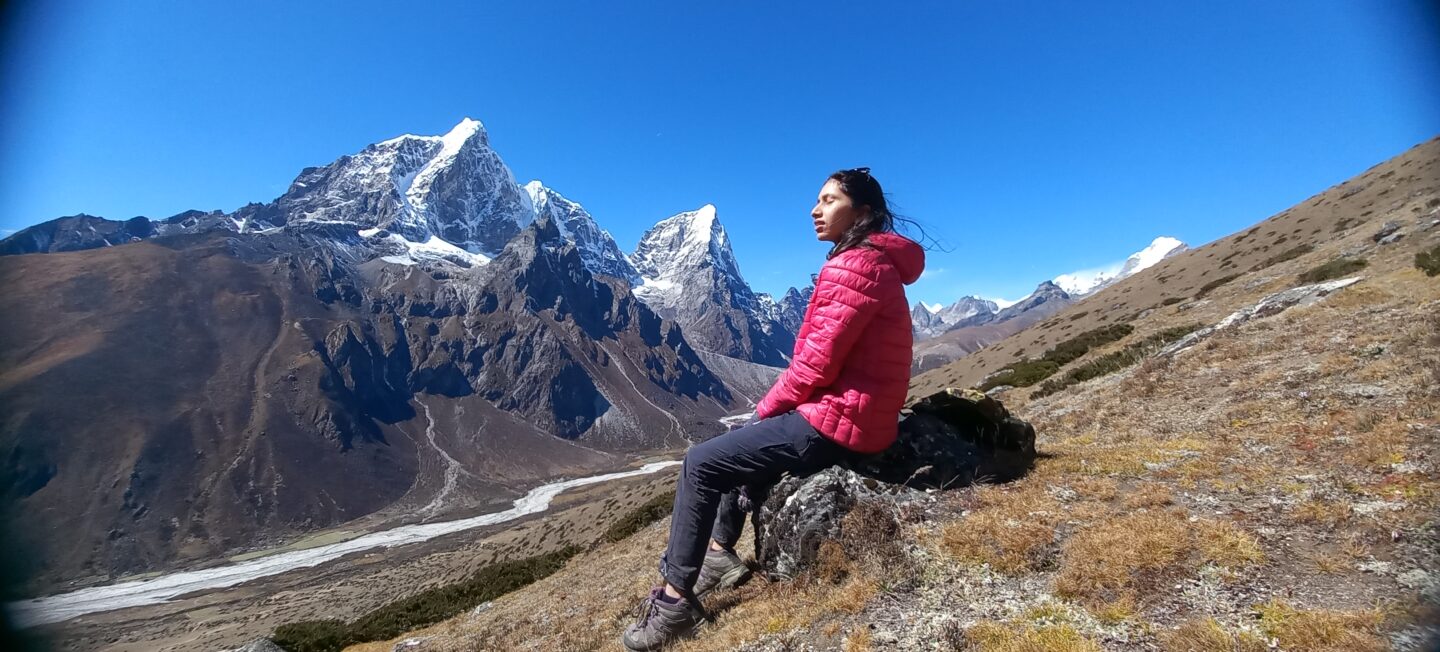
Symptoms of Altitude Sickness
Symptoms of altitude sickness are categorized into three parts:
Acute mountain sickness (AMS)
- Mild Headache
- Fatigue
- Lack of energy
- Rapid pulse rate
- Difficulty in sleeping
Altitude symptoms could range from mild symptoms to severe symptoms. 75% of people will get mild symptoms which are also called acute mountain sickness (AMS). Acute mountain sickness symptoms improve with proper acclimatization.
Acclimatization is an act of spending a few days before ascending to a higher elevation. Acclimatization allows your body to adapt to a changed atmosphere. Acute mountain illnesses usually don’t interfere with your usual activity. The other two types of Altitude sickness are rare but more serious.
High-altitude cerebral edema (HACE)
- Severe headache
- Nausea and vomiting
- Difficulty finding coordination in your walk and activity
- You may still be walking with difficulty
- Feeling confused, irritated, and short-tempered
- Being unable to think clearly
- Feeling weak or sick
- Hallucinations (seeing, hearing, or feeling things that are actually not there)
- Drowsiness or dizziness
- Shortness of breath and inactivity
- The person often does not realize they are not well or sick
HACE is also called moderate AMS, which disturbs you from carrying out your usual activities. It’s a condition in which there will be swelling of the brain tissues because of insufficient oxygen supply to the brain cells. If this condition develops you should immediately get down the elevation. Contact a medical professional for support, if you can’t get down immediately. Untreated HACE may further lead to conditions like HAPE.
High-altitude pulmonary edema (HAPE)
- It will be really difficult to walk
- Shortness of breath even at rest
- Breathlessness
- Feeling suffocated
- Chest tightness
- You may develop a cough
- Feeling extremely fatigued
- Lips, nail beds, and tongue look pale or blue
- You may lose orientation to time, place, and person
- Unconsciousness
HAPE is also known as severe AMS in which there will be fluid buildup in the lungs because of hypoxia. You should urgently descend to a lower altitude and if possible you can have an oxygen supplement till you get help.
How to know if it’s altitude sickness?
If you develop at least one symptom mentioned above along with a headache. Especially within a few hours to a few days after coming in altitude, it’s most likely to be altitude sickness.
Altitude sickness in the mountains of Nepal
As Nepal is a Himalayan country you should always predict and prepare to prevent altitude sickness.
As per the Nepal government’s data, Altitude sickness is more common among trekkers in the Everest region. Despite the region, older trekkers are found to suffer from altitude sickness.
How to get down?
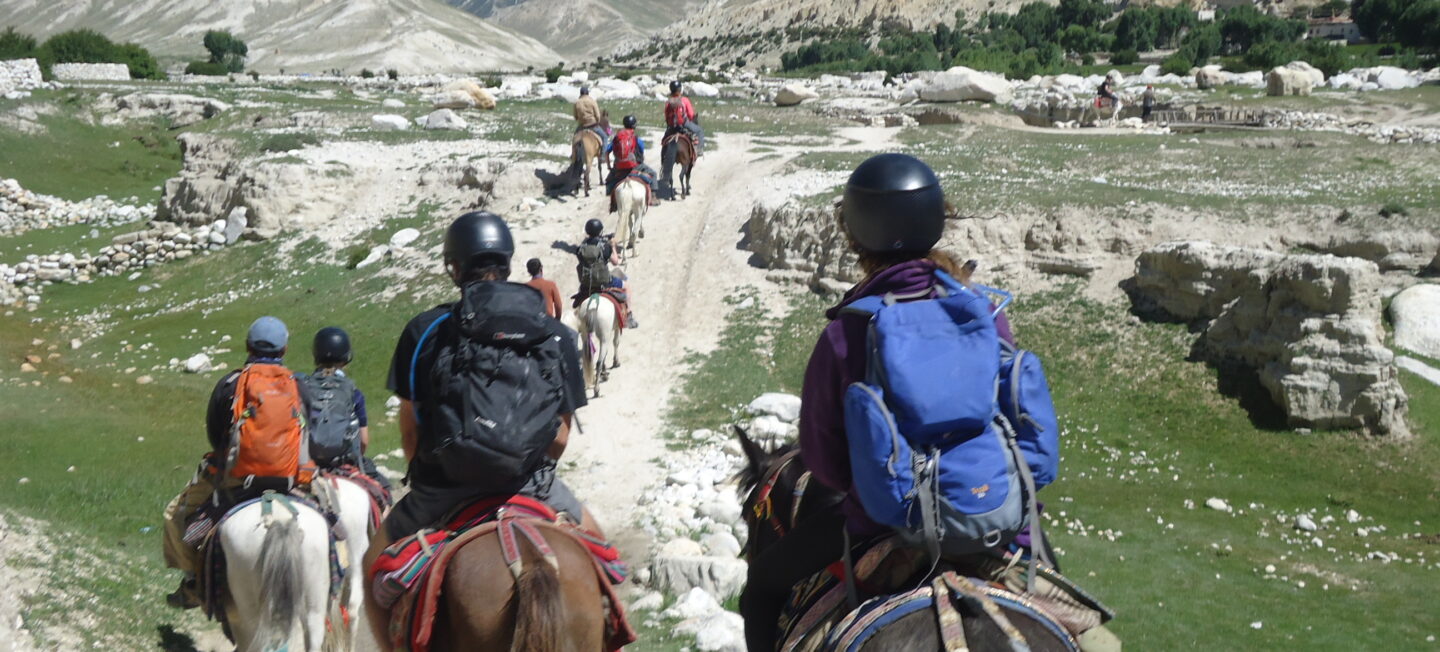
There will be horses to carry you down the altitude if you wish to step down instead of a helicopter evacuation to Kathmandu. There is no road access to the mountain regions of Nepal. If you develop severe symptoms helicopter will be 24X7 available to immediately transfer you to Kathmandu.
Helicopter evacuation is common and reliable in case of altitude sickness in the mountains of Nepal. Heli evacuation is possible from Everest, Makalu, Manaslu, Annapurna, Langtang, and Kanchenjunga regions.
Are there any remedies for Altitude sickness?
In the mountain region of Nepal, garlic soup is popular as a remedy to prevent and cure mild altitude sickness symptoms. If you are doing Annapurna Base Camp Trek, Everest Base Camp Trek, or Langtang Valley trek, local teahouses will recommend you drink Garlic Soup to keep altitude sickness away. Rehydrating yourself with plenty of fluids is also helpful.
What to load in your backpack to prevent Acute Mountain Sickness?
- Warm socks, caps, gloves, mufflers, jackets, and trousers
- Soft cotton inner garments and t-shirts (cotton helps your skin to breathe)
- Two water bottles; one for hot water and the other for cold water so that you could mix those two and drink
- Some dry nuts so that you could munch whenever you feel hungry on the way
- Few first aid drugs and oral rehydration solution (ORS)
Should I take preventative medication to avoid altitude sickness?
Acetazolamide (Diamox) is a commonly prescribed medication for altitude sickness. We as an organization don’t recommend you take acetazolamide. If your doctor has prescribed you Acetazolamide, consume it as instructed by a doctor. But you should be aware of the possible side effects of medicines which often look similar to Acute Mountain Sickness symptoms.
When to start taking acetazolamide or diamox for altitude sickness?
It is usually recommended to take medicine one to two days before starting your trek. Acetazolamide medicine takes 1-2 days to act properly. Starting early is very important to identify the side effects of medicines.
Don’t make the mistake of having acetazolamide after developing symptoms of AMS. This can further aggravate your symptoms of AMS. Don’t start Acetazolamide after reaching an altitude of 3000 meters or above.
Side effects of Acetazolamide and the symptoms of Acute Mountain sickness may coincide. It can be hard to differentiate if you are sick because of AMS or Acetazolamide.
DON’T CONSUME ANY MEDICINE OR ALTITUDE SICKNESS MEDICINE WITHOUT CONSULTING WITH A PHYSICIAN.
Contraindication of Acetazolamide
- Allergic to Acetazolamide or any other sulfa drugs
- Pregnancy
- Liver disease
- Kidney disease
- Chronic respiratory problems such as COPD, Asthma
Does altitude sickness medicine have side effects?
Yes, altitude sickness medicine can cause some side effects. Sometimes side effects can correlate with the symptoms of altitude sickness. They may range from mild to severe such as; Diarrhea, loss of appetite, nausea, increased thirst, and feeling lightheaded, etc.
Are there any long-term consequences of altitude sickness?
Mild AMS symptoms which are identified and managed early can rarely come with complications. For mild altitude sickness symptoms, you can book a checkup appointment with a doctor after reaching your home country. Screening health check-ups helps you to identify any residual health problems.
If you develop a condition like HACE or HAPE you can lose consciousness or even death.
Conclusion
Altitude sickness can develop in anyone; who has already traveled to the Himalayas or somebody going for the first time. AMS can’t be predicted so prevention is always better than cure. Plan your trip carefully with some days to acclimatize, stay hydrated, and positive. If you develop any symptoms, seek help, Don’t push yourself to go further, rest wherever you are, or get down your elevation. Remember if you allow your body to adjust to the environment, it will prepare you to climb further.
There are three types of commonly known altitude sickness types. They are; Acute mountain sickness, High Altitude Cerebral Edema (HACE), and High Altitude Pulmonary Edema (HAPE). Symptoms of AMS used to be less concerning than the symptoms of HACE and HAPE.
Experienced trek guides used to be well aware of the symptoms of altitude sickness. Trek guide also knows whom to call in case of an emergency in the mountains. Early descent from the altitude is recommended if altitude sickness symptoms arise. Helicopter rescue from the Himalayan region is the most popular and reliable means of transportation in case of emergency. Prevention of altitude sickness is always better than management of altitude sickness.
References
- (2023, June 23). What is Altitude Sickness? Healthline. Retrieved August 9, 2023, from https://www.healthline.com/health/copd/high-altitude#altitude-sickness
- (2023, July 31). Altitude Sickness. NHS. Retrieved September 9, 2023, from https://www.nhs.uk/conditions/altitude-sickness/
- Alizadeh, R., Ziaee, V., Aghsaeifard, Z., Mehrabi, F., & Ahmadinezad, T. (2012). Characteristics of Headache at Altitude among Trekkers; A comparison between Acute Mountain Sickness and Non-Acute Mountain Sickness Headache. Asian Journal of Sports Medicine. https://doi.org/10.5812%2Fasjsm.34714
- (2018, March 9). Headache Hygiene. American Migraine Foundation. Retrieved June 6, 2023, from https://americanmigrainefoundation.org/resource-library/headache-hygiene/
- (2018, March 9). Altitude Sickness. Cleveland Clinic. Retrieved June 4, 2023, from https://my.clevelandclinic.org/health/diseases/15111-altitude-sickness
Connect With BMS
Related Post
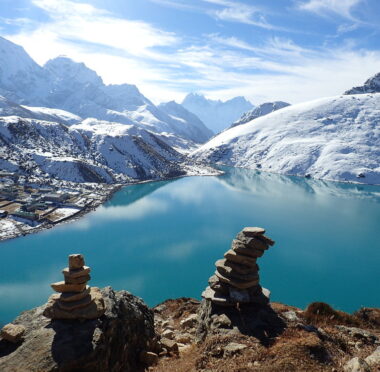
A Complete Guide for Gokyo Lake Trek
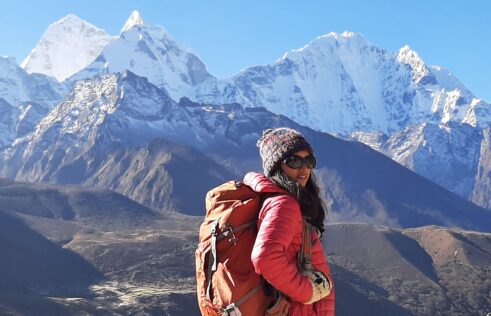
To travel is
to take a journey into yourself !

